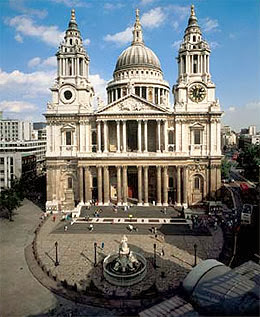Módulo : Inglés
Profesora : Rosario Moreno Sánchez
Curso : LAAC ( Laboratorio y Análisis) Distancia
Nivel : Ciclo Formativo Superior
Temporalización: 3 sesiones distribuidas en 3 semanas; al ser un módulo de enseñanza a distancia los alumnos se distribuyen personalmente sus tiempo de aprendizaje.
Session 1: Passport to London.
Situation:
1º What to say.
1.1 Asking for directions.
1.2 Now you put i tinto practice.
2º How to say it. Let´s review the imperative form.
2.1. How to form the imperative.
2.2 Now you put i tinto practice.
3º Words you need: At the airport.
3.1 Now you put i tinto practice.
Session 2 Getting used to it.
Situation:
1º What to say.
1.1 Meeting people.
1.2 Now you put it tinto practice.
2º How to say it.
2.1 How to make the Present Simple.
2.2. Frecuency adbverbs.
2.3 Now you put it tinto practice.
2.4 Pronunciation I. Voiced sounds.
Session 3: A tour around the oficce.
Situation:
1 What to say
1.1Talking about yourself
1 How to say the Present Simple and Continuous.
1.1 Now you put i tinto practice.
1.2 Stative verbs
1.3 Now you put i tinto practice.
1.4 Pronunciation II Voiceless sounds
2 Words you need: Parts of a company.
3.1 Now you put i tinto practice
Contextualización: Esta unidad está dirigida a estudiantes del Ciclo Superior de LAAC ( inglés técnico de laboratorio) . Pero el inglés técnico propuesto en la plataforma Moodle es muy general y no contempla el lenguaje específico de los técnicos de laboratorio, por eso hay que suplirlo con materiales AICLE y recursos que compensen esa carencia.
Descripción: Es una unidad basada en un contexto real atractivo para los alumnos. Son dos chicas que van a hacer sus prácticas a Londres que deben superar situaciones nuevas. Esto anima a interesarse más en aprender una lengua y plantearse un proyecto de 2º curso para hacer las prácticas en el extranjero.
Objetivos: Aproximación a una realidad cultural y un país diferente. Analizar la importancia del conocimiento de la lengua inglesa como elemento cultural para poder realizar su intership en países europeos, ampliar su movilidad y sus expectativas de conseguir empleo. Adaptarse a situaciones nuevas y a la oficina donde hacen sus prácticas
Practicar y revisar las 4 destrezas lingüísticas: speaking, listening, reading and writing junto con el andamiaje necesario para usar correctamente el imperativo, presente simple y continuo. Ser capaz de presentarse y responder a preguntas personales, hacer una descripción física y rellenar formularios con datos personales.
Contenidos de lengua y comunicación
Repaso del imperativo , presente simple y continuo. Pronunciación de la 3º persona del presente simple. Vocabulario relacionado con el aeropuerto, empresas, aficiones, tiempo libre, datos personales, países y nacionalidades, formulas de presentación y saludos.
Criterios de evaluación: La evaluación se realiza sobre 10 puntos. Los porcentajes criterios de evaluación son: Prueba presencial escrita 60%; Tareas 25%; Examen online 10%; Participación en el foro 5%.
Expresión escrita:
Corrección lingüística: 2.5 puntos.
Riqueza léxica: 2.5 puntos.
Cohesión y coherencia: 2,5 puntos.
Adecuación (formato y registro): 2.5 puntos.
Expresión e interacción oral:
Corrección lingüística y léxica: 2.5 puntos.
Pronunciación: 2.5 puntos.
Adecuación (duración y registro): 2.5 puntos
Cohesión y fluidez: 2.5 puntos.
Actividades comunicativas: Chats, cuestionarios, paquetes scorms; aprender vocabulario incrustado en el contexto mediante matching exercises, completar huecos, verdadero o falso, multiple choice, revisión de estructuras con links; quizzes, repasar con feedback. Grabar y escuchar su voz. Participar en el foro como vehículo comunicativo y cooperativo, planteando dudas y temas de debate. Mapa conceptual, nanogong, audio fórum, hotpotaoes.
Actividades para profundizar e investigar vocabulario específico del Módulo de laboratorio.
Elaborar un glosario entre todos los alumnos donde a través de un proceso colaborativo puedan confeccionar un glosario con los términos más relevantes de su aprendizaje en los distintos Módulos. (En los Ciclos Formativos las asignaturas se llaman Módulos). Fijar y aprender el lenguaje científico mediante andamiaje, estructuras gramaticales, verbos más usados adjetivos y tiempos verbales.
WEBGRAFÍA.
Webs generales:
Webs específicas de laboratorio: Practicar vocabulario y estructuras
http://www.bbc.co.uk/schools/gcsebitesize/science/
http://www.chem4kids.com/files/elem_intro.html http://ead.murciaeduca.es/mod/resource/view.php?id=30965
Diccionario de términos de laboratorio http://www.caslab.com/Laboratory-Terms/
Link para ver la unidad completa


